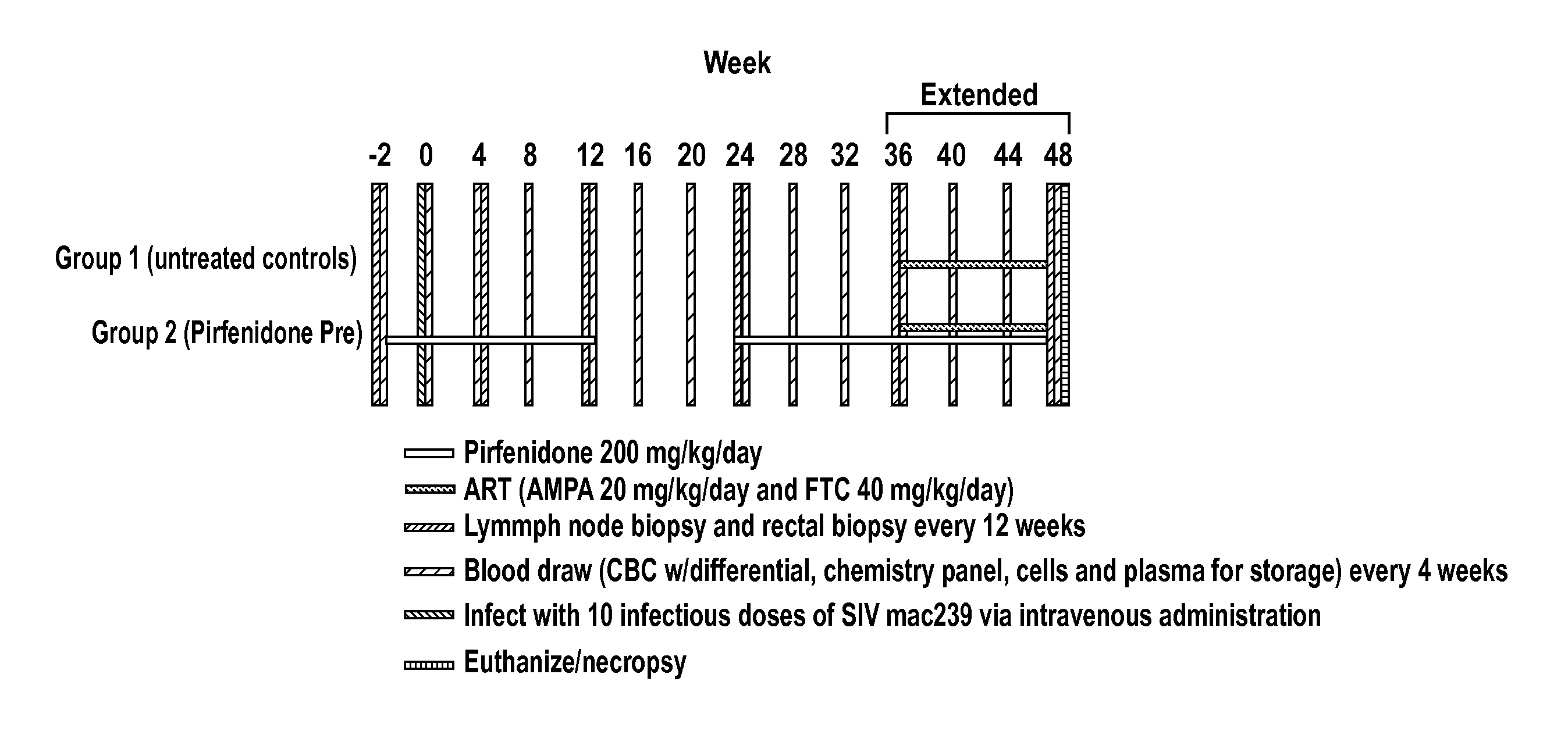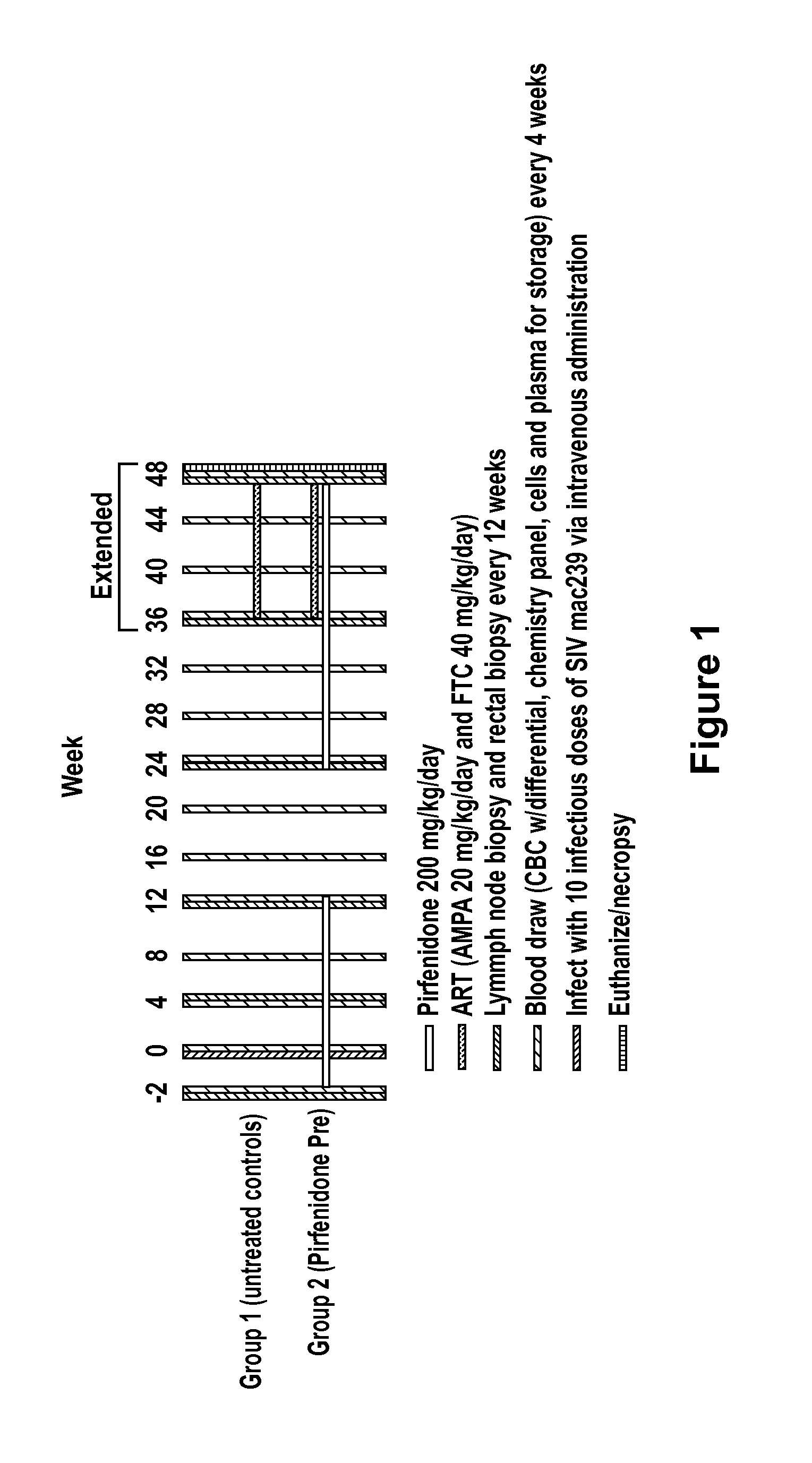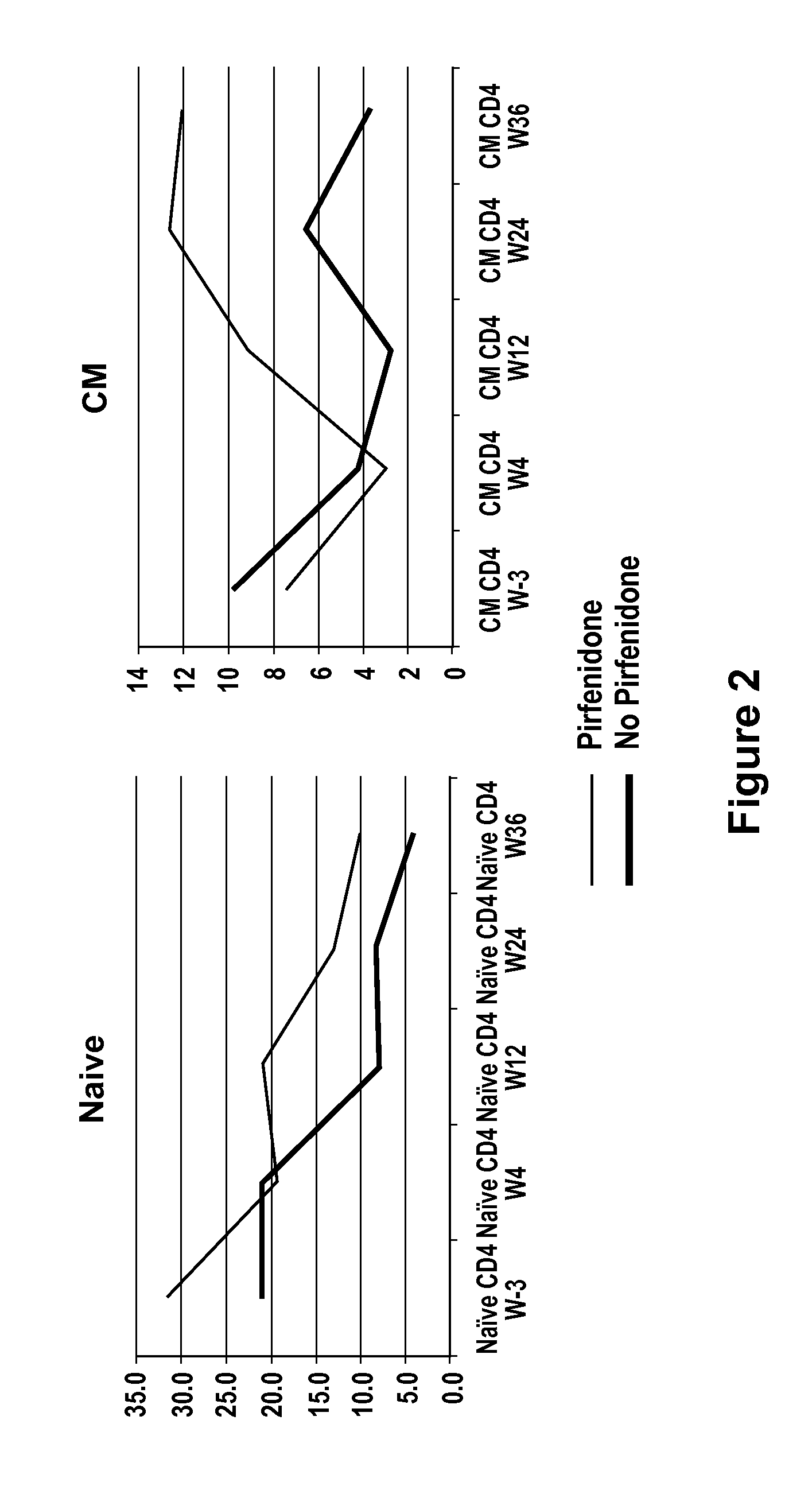Methods of treating HIV patients with Anti-fibrotics
a technology of immunodeficiency virus and treatment method, which is applied in the direction of biocide, drug composition, peptide/protein ingredients, etc., can solve the problems of limited or absent immune reconstitution, few patients receive clinical benefit, and few patients achieve normal levels of immune reconstitution
- Summary
- Abstract
- Description
- Claims
- Application Information
AI Technical Summary
Benefits of technology
Problems solved by technology
Method used
Image
Examples
example 1
[0184]This example describes quantification methods which can be used in conjunction with the methods of the present disclosure. The following examples are quantitative methods described in the context of monkeys. Modifications to the protocols may be necessary for other mammals, including humans.
CD4+ Cell Quantitation
[0185]Venous blood will be used to measure CD4+ cell count by flow cytometry. Tissue biopsies (LN and ileal GALT samples) are divided; one portion will be processed by immunohistochemical staining for quantitative image analysis to determine the absolute size of the total CD4+ cell population, and the remaining portion will be processed by flow cytometry to proportionately quantify CD4+ cells (total, naïve, central memory [CM], and effector memory [EM] T cells). These methods have been published elsewhere [Schacker et al., 2006, Clinical and Vaccine Immunology 13:556-60; Schacker et al., 2005, AIDS 19:2169-71; Schacker et al., 2002, J Clin Invest 110:1133-9; Schacker J...
example 2
[0190]This example describes the use pirfenidone in a non-human primate [Rhesus Macaque (Macaca mulatta)] model of Simian Immunodeficiency Virus (SIV) infection to show that pirfenidone inhibits fibrosis caused by viral replication in lymphatic tissues.
[0191]In this study, six animals were divided into two groups of three animals each. One group received pirfenidone for 2 weeks and then was infected with SIV MAC239. The other group did not receive pirfenidone. Pirfenidone was continued for 12 weeks following infection and then discontinued for 12 weeks (i.e., week 24) and then restarted. Thus, the pirfenidone-treated group would receive pirfenidone from week −2 to week 12 (14 weeks) and from week 24 to week 36 (12 weeks) for a total of 24 weeks. The other group of three animals did not receive pirfenidone at any time point. The dose of pirfenidone used was 200 mg / kg orally, twice daily (BID) for a total daily dose of 400 mg / kg / day. This corresponds to a human dose of approximately 6...
example 3
[0195]It is also contemplated that the study described in Example 2 may be extended to 48 weeks and beyond. The protocol for this extension is also described in FIG. 1 (shown as “Extended” in FIG. 1).
[0196]In addition to continuing the measurements described in Example 2 at the 48 week time point, both groups of animals are administered 9-[2-(R)-[[bis[[(isopropoxycarbonyl)-oxy]methoxy]phosphinoyl]methoxy]propyl]adenine fumarate (PMPA) and Emtricitabine (FTC) (i.e. antiretroviral therapy known to inhibit SIV replication) at 36 weeks after infection to observe the level of immune reconstitution in animals treated with an anti-fibrotic agent relative to untreated animals following initiation of antiretroviral therapy.
[0197]It is expected that the extension of the protocol will result in data that follow the trends described in Example 2 and that animals treated with an anti-fibrotic agent experience greater immune reconstitution upon initiation of antiretroviral therapy.
PUM
| Property | Measurement | Unit |
|---|---|---|
| time | aaaaa | aaaaa |
| time | aaaaa | aaaaa |
| molecular weight | aaaaa | aaaaa |
Abstract
Description
Claims
Application Information
 Login to View More
Login to View More - R&D
- Intellectual Property
- Life Sciences
- Materials
- Tech Scout
- Unparalleled Data Quality
- Higher Quality Content
- 60% Fewer Hallucinations
Browse by: Latest US Patents, China's latest patents, Technical Efficacy Thesaurus, Application Domain, Technology Topic, Popular Technical Reports.
© 2025 PatSnap. All rights reserved.Legal|Privacy policy|Modern Slavery Act Transparency Statement|Sitemap|About US| Contact US: help@patsnap.com



